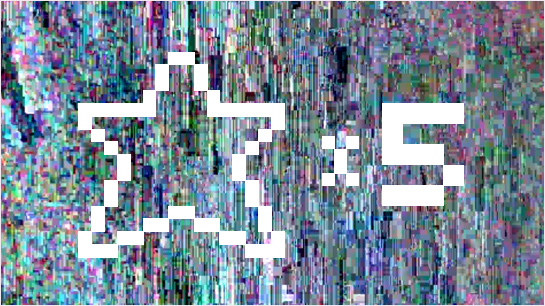
Innovation. Inspiration. Creativity. We toss those words around daily. Are they just fancy ways to say “I’ve had an idea?” Those of us who are marketers, designers, and artists are often labeled as creative. But what do people mean by that? There’s a widely-held (and poorly-articulated) image of the stereotypical creative person floating about in our culture. Is it Steve Jobs? Albert Einstein? Thomas Kinkade? Are creative people different than that? Can we better quantify and understand creativity?
Generally, creativity is widely discussed but poorly understood, and the “creative person” even more so. The prevailing stereotype of creative action doesn’t help matters, either. If we can better define what it means to be creative (and the disparate flavors of creativity), maybe we can better harness that creative output — whether it means assembling a team, hiring a firm, or merely understanding how to best exploit our own skills and natural tendencies.
After meeting and interacting with many creatives over the years, I’ve had to continually expand my definition of what creativity looks like. Sure, sometimes it manifests itself in the traditional way: creating something out of nothing. That lightning bolt of inspiration, or ideas from out of the blue. But other times, being creative is a slogging, noodling process that develops at a snail’s pace. This isn’t to denigrate the classical creative mold, or to lower the bar in defining what we see as creative. It just means that there are different types of creative people and methods out there. We don’t all fit into the same mold. In the same way that we now think about smarts as a set of multiple intelligences, this might be a useful lens in considering definitions of creativity.
To sow the seeds of discussion, I’ve identified five unique types of creativity, knowing full well that some people exhibit multiple facets, or bleed into different categories. Here are the each of these five initial categories. Where do you see yourself among these?
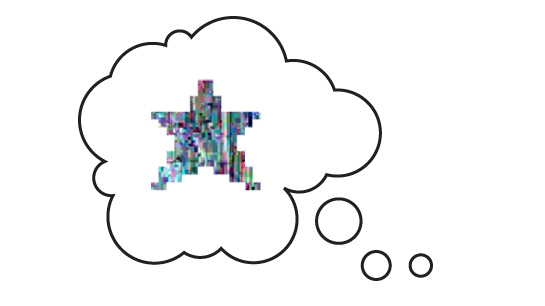
The Inventor
This is the traditional idea of creativity, pulling an idea or concept out of the ether, imagining something where there was previously nothing. Poof! This classic Edison or Da Vinci style of creativity (or its trendy cousin, “innovation,”) is what most people think of when they consider being creative. The trick to harnessing these types of people is understanding how to best deploy them. Generally, they are good at solving problems from the gut, intuiting needs that people don’t realize they have yet. But it often takes time, and the journey of imaging worlds that don’t yet exist is rarely a straight line. Set these people free on specific problems, and allow them to loosen the boundaries of what is possible.
Weaknesses: They are typically not as skilled in iterating or creating dozens of slight variations. If you’re managing or partnering with an Inventor, it’s best to focus them on the broad strokes of an issue, a problem, or an idea. Instead of burdening Inventors with working out the finest details of an idea, you might allow them to pass the finishing touches onto other team members, and move on to new problems.
Examples: Leonardo Da Vinci, Archimedes, Thomas Edison
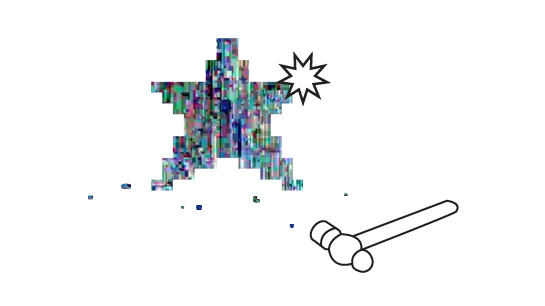
The Craftsman
Women and men who belong in this category are more traditional artisan creators, often seen with their heads down and noses to the grindstone (sometimes literally). They whittle, paint, carve, weld, design — their output has a focus on detail, high quality, possibly bordering on perfectionism. Technology and the accessibility of creative tools has thinned this herd somewhat, but in earlier times, these were the exemplary paste-up artists, sign painters, and carpenters. It might seem like our culture has moved away from this type of creativity, but it’s alive and well in the minds of rock star programmers, silkscreen artists, and DIY moonlighters.
Weaknesses: Look at these people, and you might see them getting lost in the details, because they’ve narrowed like a laser beam on to a particular facet, issue, or detail. Sometimes that focused state can be counterproductive when no one else is providing the bigger picture. To balance out a Craftsman, make sure you have great project managers or others committed to keeping the overall project goals, deadlines, and 10,000-foot view in mind.
Examples: Ed Fella, Chris Ware
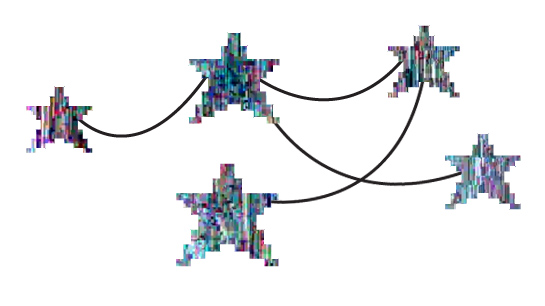
The Connector
When you look at one of these people, you might not see a traditional, inspirational creative type. There’s no genre-inventing or trendsetting happening in front of them. Instead, the Connector is someone who draws on the knowledge, styles, and thoughts of others — remixing, reworking, and building them into new things. This might be the sampling artist, the collage creator, or someone who more generally gets great results while standing on the shoulders of others. But make no mistake about it — there is a deep creativity at work here, because these people broaden our world when they provide new contexts, weld disparate ideas together, and basically make something new out of the old.
Weaknesses: Because Connectors tend to work above the typical level of idea generation, they’re often focused on creative process. This is valuable when it’s usefully repeatable, but can also become a crutch that replaces fresh thinking. To get the most from Connectors, it’s important to allow them to partner with Craftsman types or others who will keep feeding them ideas that can be combined, remixed, and revisited. Connectors are often excellent team members, and tend to thrive in those environments, helping draw more out of all other players.
Examples: Andy Warhol, Shepard Fairey
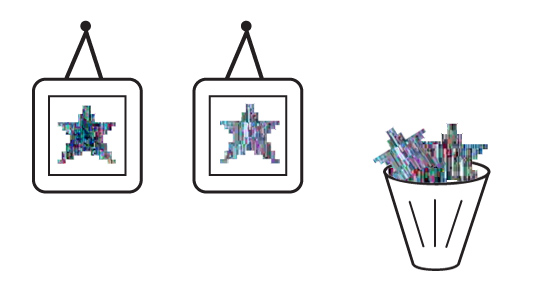
The Curator
For this type of person, the sum is often greater than the whole. With Curators, the bird’s eye view is the thing. They bring value by making creative decisions that categorize, sort, and organize by deciding what stays in the picture, or what belongs in a series. Curation is defined by assembling things and observing how the act of categorization changes their individual parts. Steve Jobs did this exceptionally well, by gathering existing technologies, concepts, and ideas– then choosing what to leave out, narrowing down to only the best designs and features he believed were necessary. Curation also provides a unique value in sizing up and contextualizing work.
Weaknesses: Because their value comes from the thoughts that tie together elements and ideas, Curators can fall into the trap of lowering their standards to fit something into a larger body of work. If they are not vigilant, it can be easy to miss the trees for the forest, and Inventors and Craftsmen need to be on hand to keep standards high.
Examples: Ken Burns, Tina Roth Eisenberg, Steven Heller
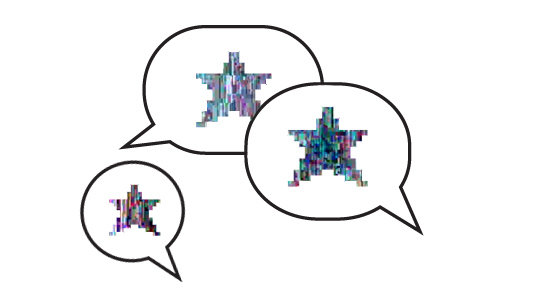
The Critic
These are the people who attempt to bring order to creations, to assess, challenge, and understand the things we’ve made as a culture. Judgment, understanding, and evaluation are arts in themselves, worthy of respect. The contributions of the Critic are completely dependant on other kinds of creators, but that doesn’t diminish the need for someone to take the time and do the difficult (and underappreciated) work of criticism. The role of critic is simultaneously growing and disappearing in our creative culture. Ease of publishing online (blogs, videos, etc.) can make anyone an instant Critic, and there is no shortage of opinions on the Internet. But opinions alone don’t birth a Critic. The true and valued Critic has extensive knowledge in a subject matter, wide view, and the ability to articulate thoughts that add wisdom and foster discourse. These creatives don’t just tell us what is good or bad, but instead, help us understand how, why, and when to make such distinctions.
Weaknesses: In an increasingly cynical world, many forms of criticism are seen as negative — just know-it-alls spouting their snooty (and often negative) opinions. Critics must work hard to avoid falling into the stereotypical destructive behavior we sometimes associate with the Critic. The true critical work is more about adding, building, and creating than it is about tearing down or ripping apart creative work. Even the word criticism has negative connotations, but Critics should be wary of turning into a fount of negativism that is the caricature of constructive, helpful criticism.
Examples: Marcia Lausen, Alice Twemlow
Again, these creative categorizations are not hard and fast definitions. Many of us exhibit multiple qualities in lesser or greater amounts, but these creations might be the most helpful for the individual person. With some self-reflection and evaluation, these roles are useful in trying to understand our own creative strengths, and how we can best work in isolation or as part of a larger team. And for those building their own creative teams — as part of a staff, internally, or in partnering with firms and individuals — it seems prudent to have a broad representation of the types on this list for a well-balanced and effective team. We’re very interested in your thoughts with these constructions, and welcome dialogue about these types of creativity.
These ionizihttps://woorihot.comng radiationhttps://woorihot.coms are used/ehttps://woorihot.committ